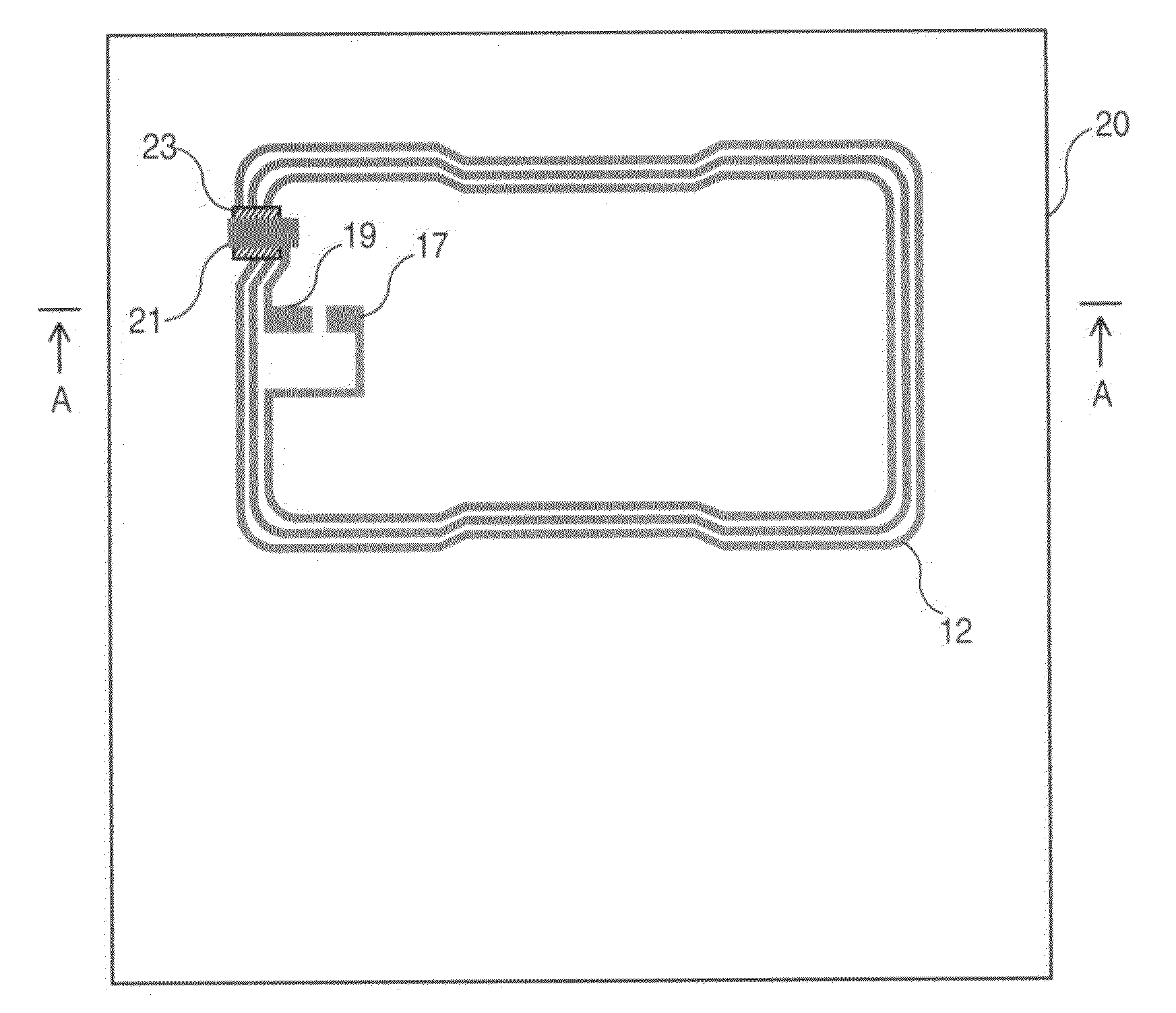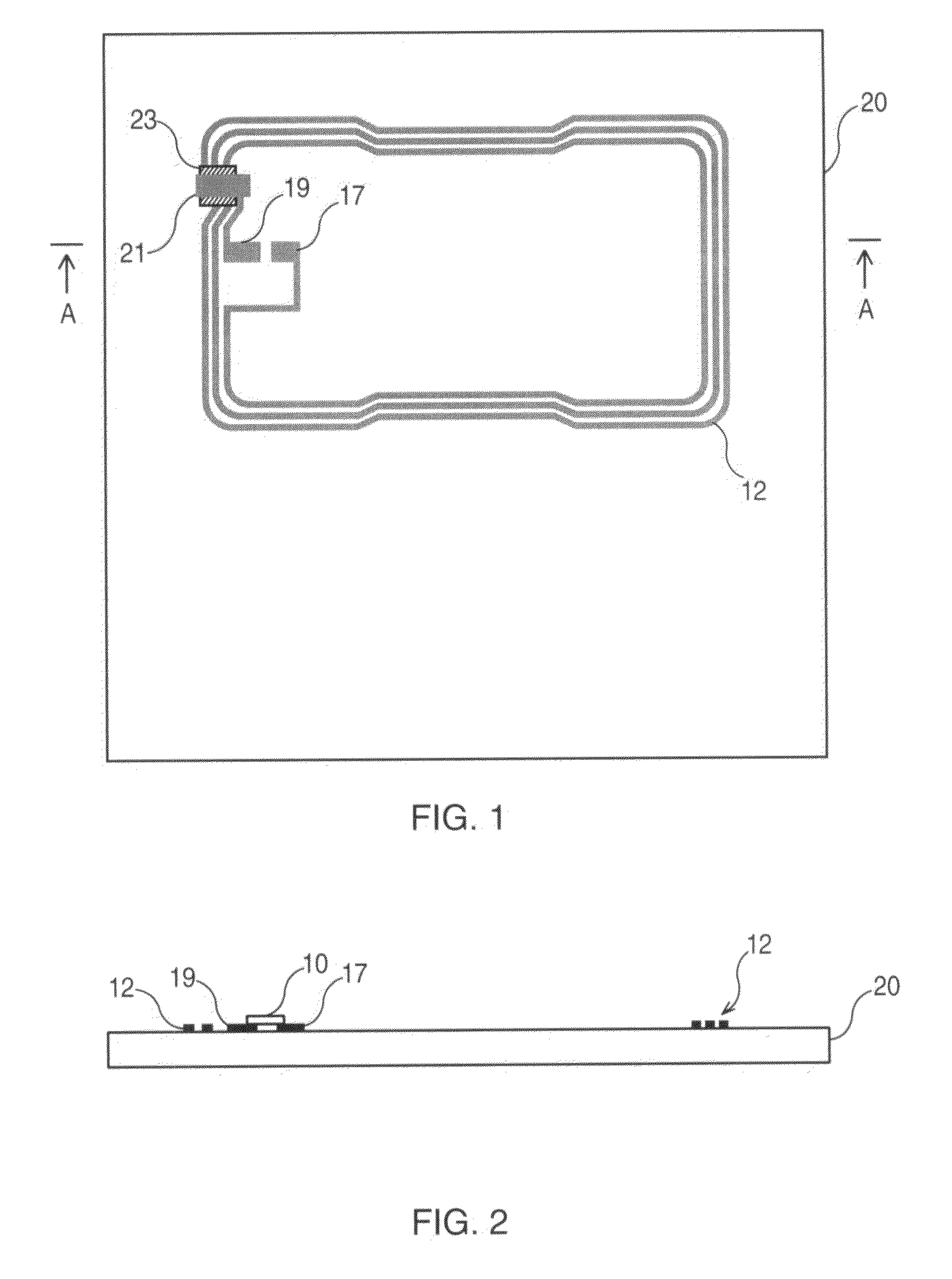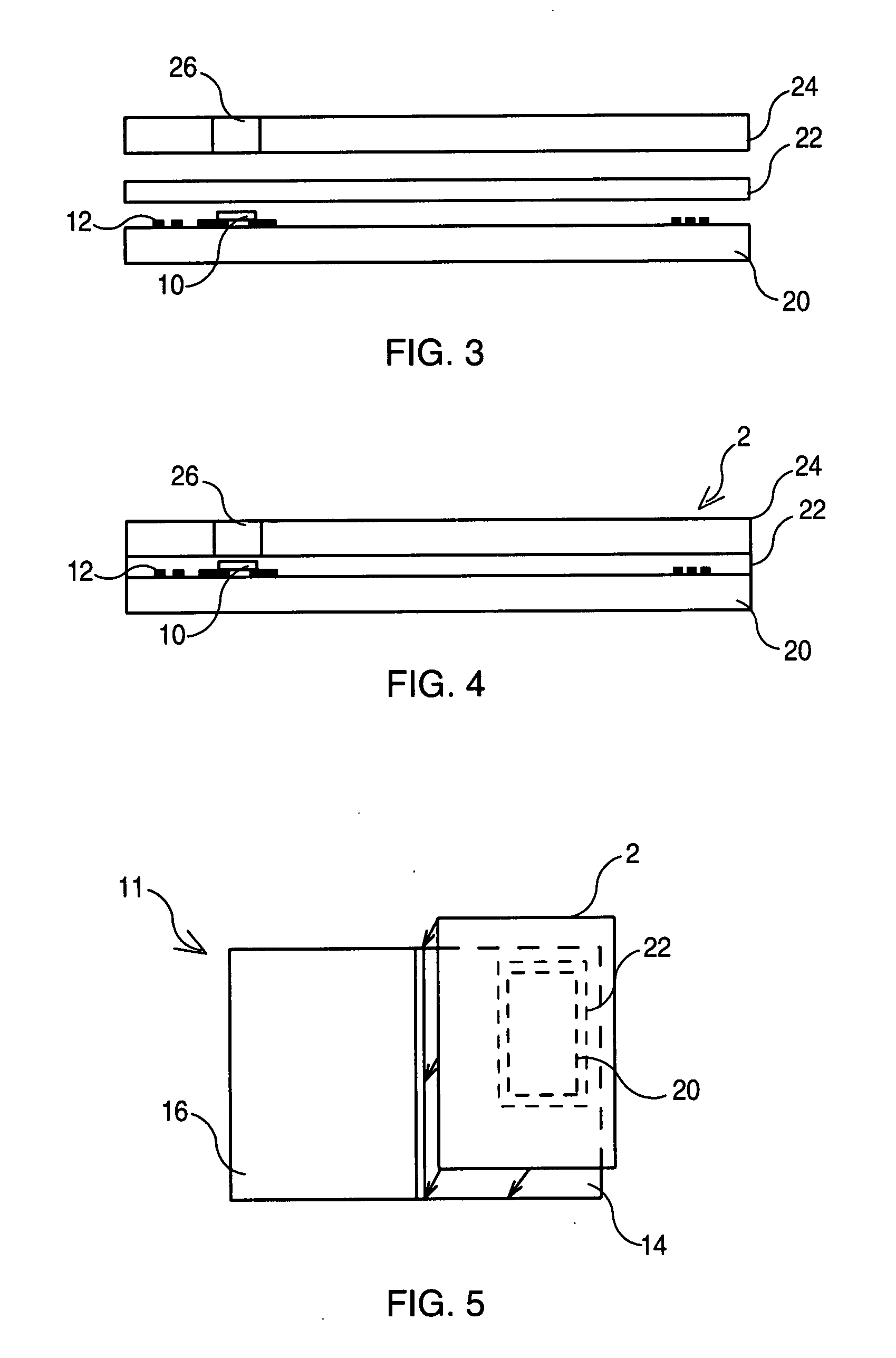Radio frequency identification device support and its manufacturing method
a technology of radio frequency identification and support, which is applied in the direction of mechanical actuation of burglar alarms, instruments, and semiconductor/solid-state device details, etc., can solve the problems of antenna fracture, antenna and chip electrical connection rupture, and material difference between inlay and passport, and achieve good affinity for gluing
- Summary
- Abstract
- Description
- Claims
- Application Information
AI Technical Summary
Benefits of technology
Problems solved by technology
Method used
Image
Examples
Embodiment Construction
[0030]With reference to FIG. 1, a first layer 20 is used as a support for the antenna and its size corresponds to that of a closed passport, that is to say approximately 88×125 mm. The material of the layer 20 is a material that does not melt and thus does not deform irreversibly when the temperature increases. The material of layer 20 is preferably a material whose cohesion is not modified much during a hot lamination operation which consists in exerting pressure. The antenna 12 that makes up an essential element of the RFID device consists of one or more turns screen printed with an electrically conductive polymer ink, loaded with conductive elements such as silver, copper or carbon. Each end of the antenna is connected to one of the two contacts 17 and 19 of the antenna which are also screen-printed. The turns are interconnected by an electric bridge 21 most commonly referred to as the “cross-over”. An insulating strip 23 of dielectric ink is screen printed between the cross-over...
PUM
 Login to View More
Login to View More Abstract
Description
Claims
Application Information
 Login to View More
Login to View More - R&D
- Intellectual Property
- Life Sciences
- Materials
- Tech Scout
- Unparalleled Data Quality
- Higher Quality Content
- 60% Fewer Hallucinations
Browse by: Latest US Patents, China's latest patents, Technical Efficacy Thesaurus, Application Domain, Technology Topic, Popular Technical Reports.
© 2025 PatSnap. All rights reserved.Legal|Privacy policy|Modern Slavery Act Transparency Statement|Sitemap|About US| Contact US: help@patsnap.com



